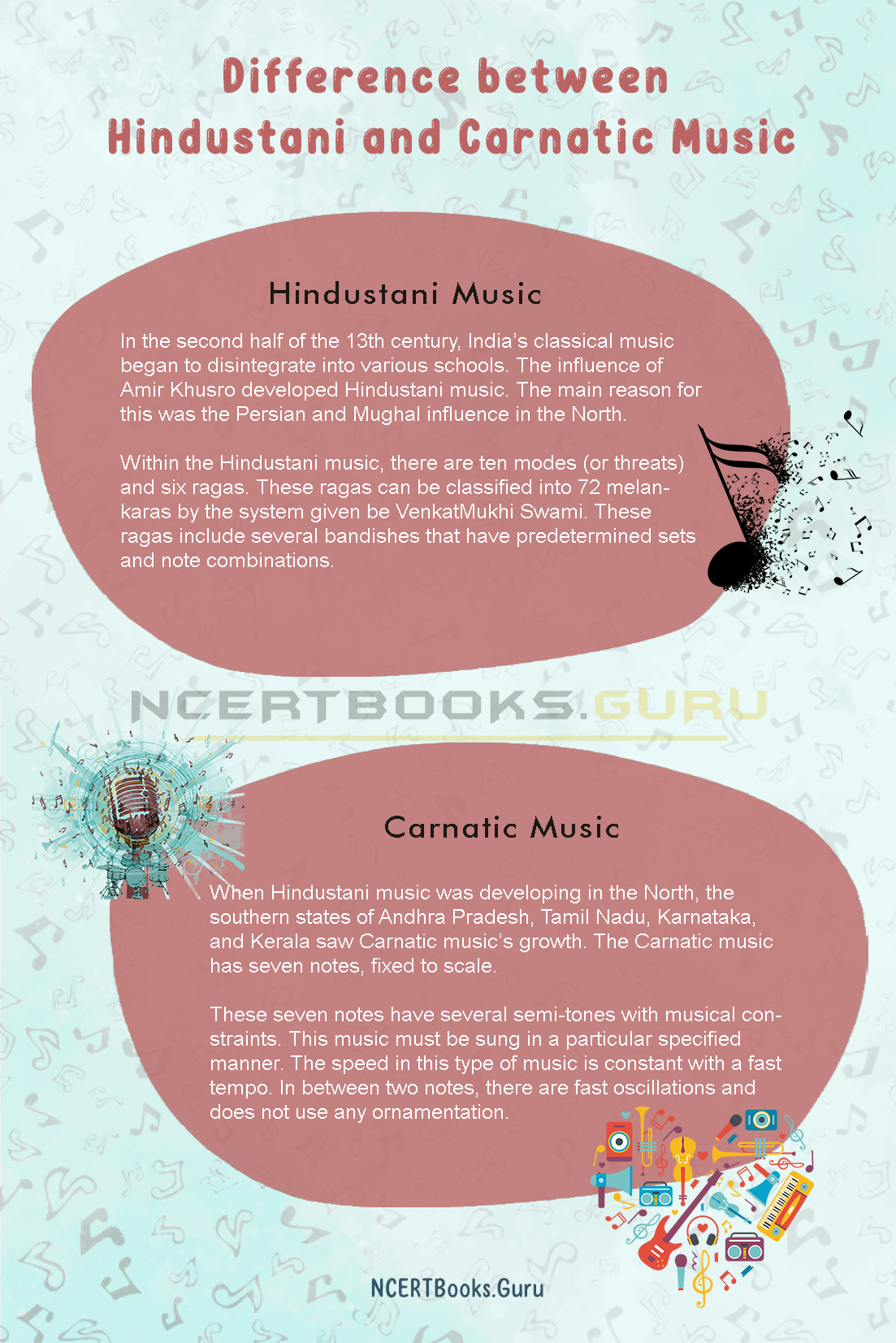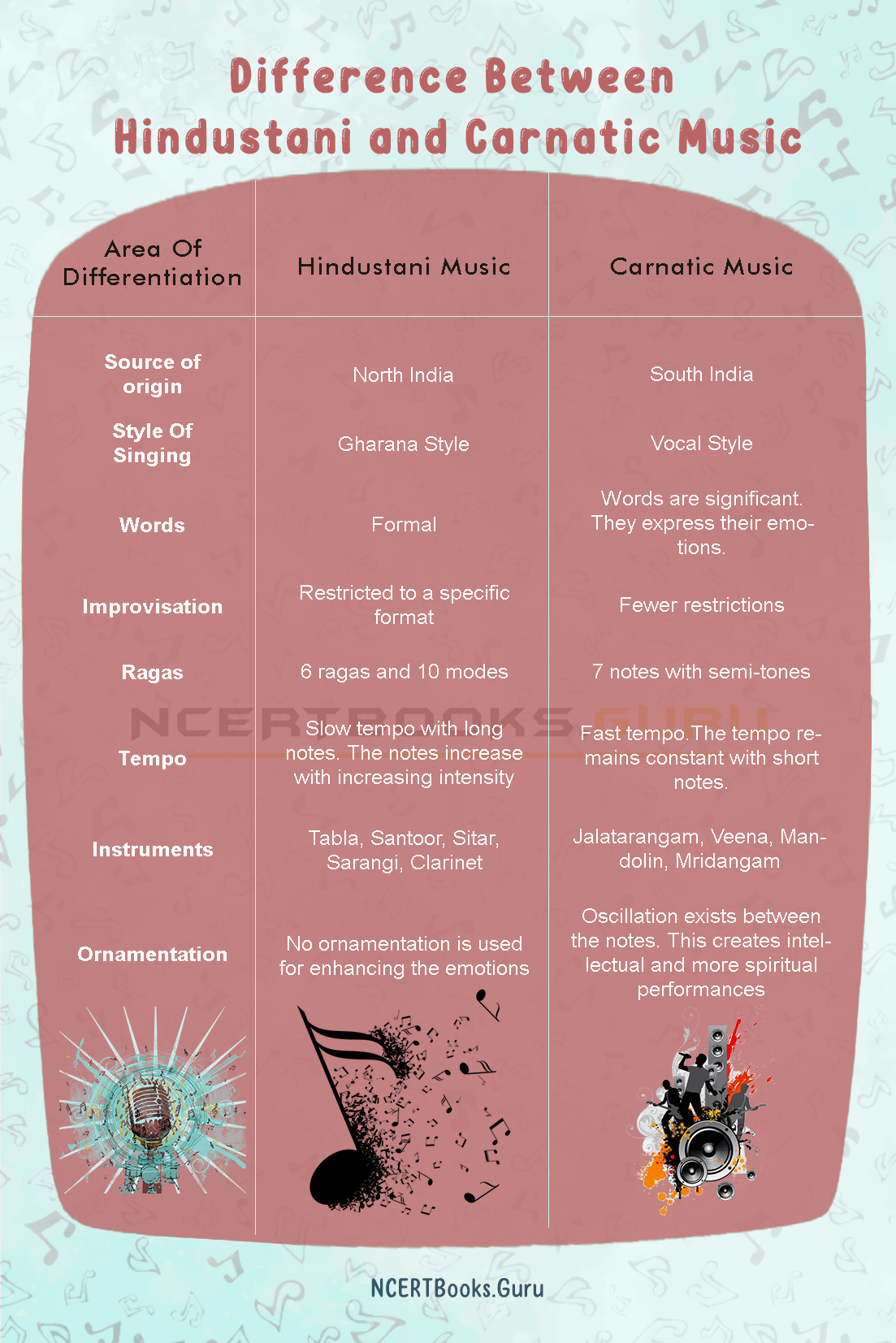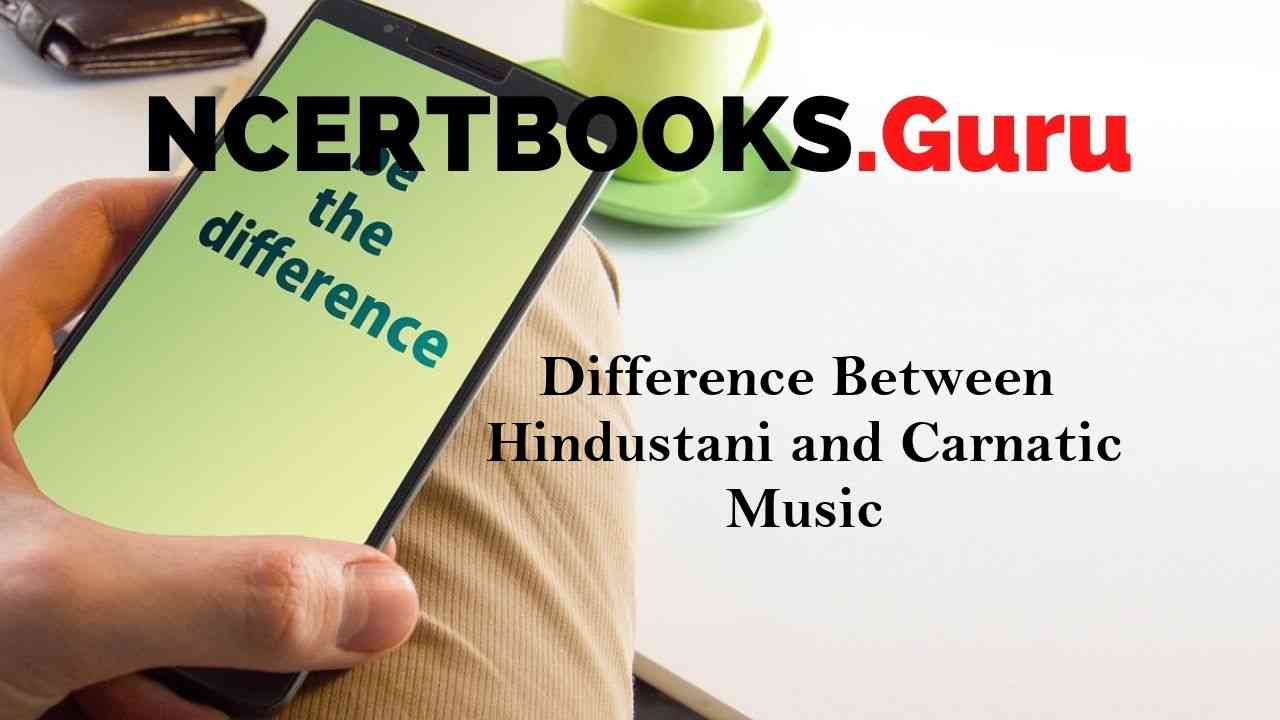Introduction
Ever since medieval times, the development of Indian music took place through two critical traditions, Hindustani and Carnatic music. These two schools of music came from North India and South India, respectively.
The roots of Hindustani music can be found in the earliest Vedic traditions. Carnatic music, on the other hand, developed during the Bhakti movement.
You can also find differences between articles on various topics that you need to know. Just tap on the quick link available and get to know the basic differences between them.
What is the Difference between Hindustani and Carnatic Music
About Hindustani Music
In the second half of the 13th century, India’s classical music began to disintegrate into various schools. The influence of Amir Khusro developed Hindustani music. The main reason for this was the Persian and Mughal influence in the North.
Within the Hindustani music, there are ten modes (or threats) and six ragas. These ragas can be classified into 72 melankaras by the system given be VenkatMukhi Swami. These ragas include several bandishes that have predetermined sets and note combinations.
About Carnatic Music
When Hindustani music was developing in the North, the southern states of Andhra Pradesh, Tamil Nadu, Karnataka, and Kerala saw Carnatic music’s growth. The Carnatic music has seven notes, fixed to scale.
These seven notes have several semi-tones with musical constraints. This music must be sung in a particular specified manner. The speed in this type of music is constant with a fast tempo. In between two notes, there are fast oscillations and does not use any ornamentation.

Difference Between Hindustani and Carnatic Music
| Area Of Differentiation | Hindustani Music | Carnatic Music |
| Source of origin | North India | South India |
| Style Of Singing | Gharana Style | Vocal Style |
| Words | Formal | Words are significant. They express their emotions. |
| Improvisation | Restricted to a specific format | Fewer restrictions |
| Ragas | 6 ragas and 10 modes | 7 notes with semi-tones |
| Tempo | Slow tempo with long notes. The notes increase with increasing intensity |
Fast tempo. The tempo remains constant with short notes. |
| Instruments | Tabla, Santoor, Sitar, Sarangi, Clarinet | Jalatarangam, Veena, Mandolin, Mridangam |
| Ornamentation | No ornamentation is used for enhancing the emotions | Oscillation exists between the notes. This creates intellectual and more spiritual performances |

Similarities Of Hindustani and Carnatic Music
- Apart from the styling differences between these two music branches, the primary elements in these two branches are the same; ragas, swaras, and talas.
- The foundation of both these music branches is the same.
- Both are monophonic and use Taanpura (or Drone) as their main Shruthi.
- Both these forms of music have their origin in spirituality and religion; the Hindustani music evolved in the Vedic times, and the Bhakti movement saw the emergence of Carnatic music.
- Both of these forms were developed by translating the Sanskrit language.
- To describe the Janya Raga, both of these music branches use the Sampoorna scale.
- The central notion is similar: a raga.
Frequently Asked Questions on the Difference between Hindustani and Carnatic Music
Question 1.
Where did Hindustani music and Carnatic music have their origin?
Answer:
Both these famous music branches have developed in medieval times. The Hindustani music saw the influence of Persian and Mughals. This branch developed in the Vedic times. Carnatic music evolved through the Bhakti movement.
Question 2.
What are some popular songs from the Carnatic music genre?
Answer:
Some of the famous songs in this genre are SwethaGanapathim, BhajaGovindham, Jo Achutananda.
Question 3.
Who are some famous vocalists from the Hindustani music genre?
Answer:
Pandit Ravi Shankar is a famous name from the Hindustani genre. Bhimsen Joshi, UstadBismillah Khan, AnuradhaSriram are some other eminent personalities.
